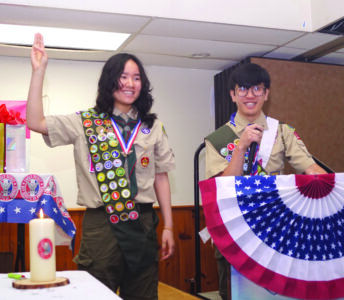The “silent majority” is a Vietnam era term from the late 1960s and early 1970s that described the many Americans who did not agree with all aspects of the emotionally-charged calls for change that were reflected in countless demonstrations and protests.
These millions of Americans broke their silence on Election Day and through the candidacies of those who they supported. That is not to say they might not take to the streets on occasion, but their way was less about the public protest and more about fixing it through a slower, deliberative process.
Not surprisingly this brings me to the Eric Garner decision. I cannot help but wonder how many of the tens of thousands who took to the streets are registered to vote or actually did vote. Statistics show that few New York City residents voted in the last two elections. And the groups with the lowest turnout by far were the under-30 group and minorities, which not coincidentally were the age and racial groups that primarily made up the protestors.
Would it not be ironic if those calling for change by protesting failed to participate in the part of the process that is most effective in bringing about change – voting? Would it not be equally ironic if their reason for not voting was an argument that it did not matter or they did not have the time but they thought closing down the West Side Highway did matter and they had hours of free time to do it?
New York City is a city of ironies and contradictions. It’s a city in which the government leadership is heavily minority, the mayor’s family bi-racial, two of its five district attorneys are black and its police department fortunate to have many blacks and Hispanics in its ranks, including in key leadership positions.
Thus it is no wonder that many scratch their heads wondering how the protestors and civil rights leaders can argue that the Garner incident is reflective of a racially insensitive police department. This is not to say that changes should not be considered in some policing policies, but in order to review a problem properly you need to first understand the problem. The Garner tragedy was not racially motivated.
Getting back to the “silent majority,” I would suggest that demonstrators will continue to march and the “silent majority” will continue to vote. Considering that I am a protestor (peaceful protestor I should point out) from way back, having marched in front of public buildings and along sidewalks countless times, as well as having never missed voting in an election, I know the best way to bring about change is to express your view forcefully, but peacefully and to vote.
Short of that, given the choice, exercising your right to vote and participating in the electoral process by supporting candidates is the best way to improve things.
And that is the reason that I would argue that the “silent majority” watching the protestors on TV or living it by being stuck on a highway, bridge or tunnel are forming their own opinions – some not so favorable about their fellow Americans. And I would suggest that the “silent majority” in the final analysis will not be so silent when it comes to voting and that real change will be mostly brought about by them.
So my advice to all those who want policy makers to sit up and listen to their complaints that they protest in a peaceful and intelligent manner since those who the politicians will ultimately be listening too are not marching on the streets, but more likely discussing things at the dinner table.
This column marks my 26th anniversary. I am proud to say that I have never missed a week. That’s 1,352 weekly columns. I wish to thank my editors and readers for putting up with my rants week and week. I do not know if you all feel better after reading Common Sense, but I know that I enjoy expressing my views each week.

 On the Avenue: Troop 18G honors 2nd Eagle Scout
On the Avenue: Troop 18G honors 2nd Eagle Scout  On the Avenue: ‘Gin Merchant’ drink coming to a bar near you!
On the Avenue: ‘Gin Merchant’ drink coming to a bar near you!